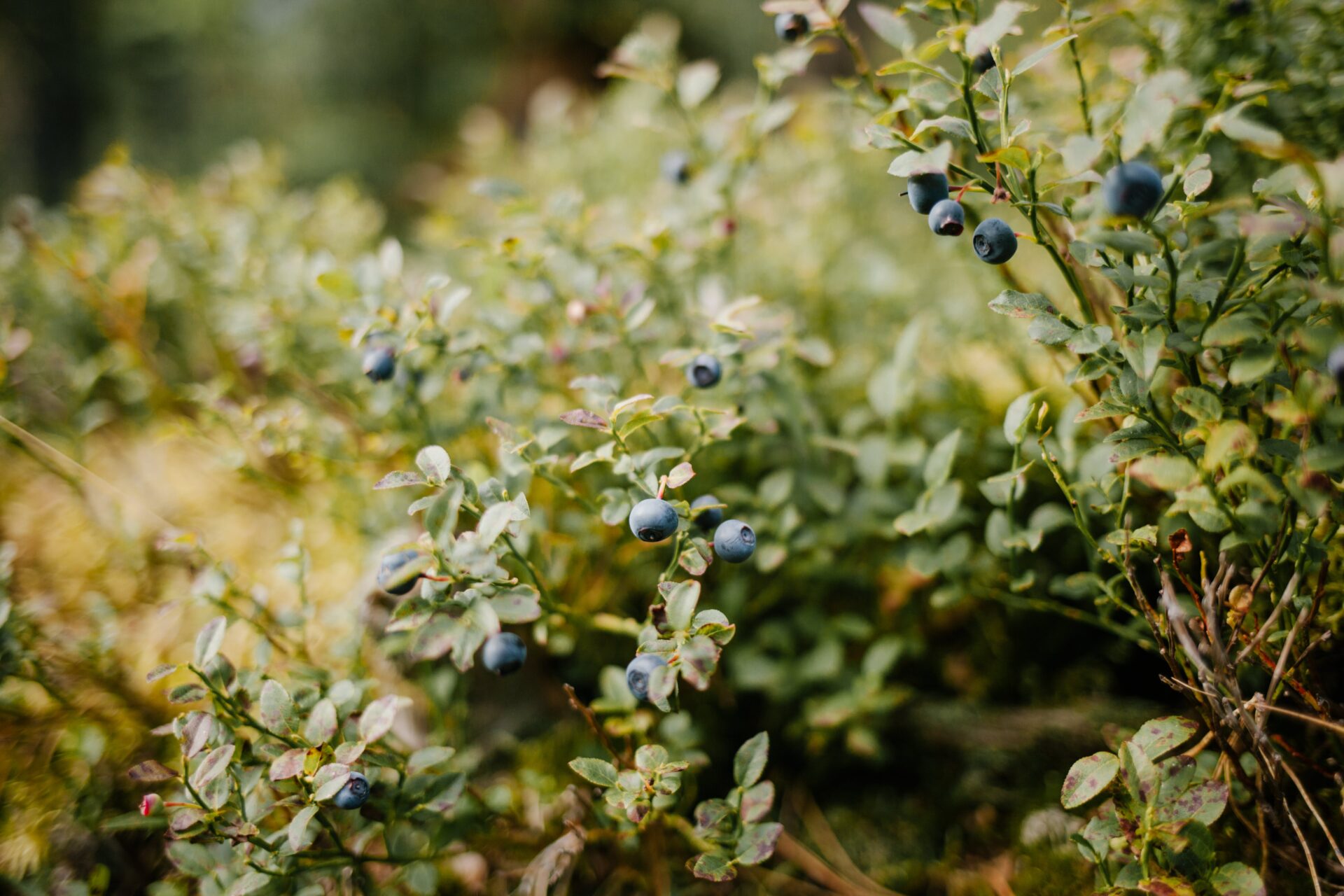Blueberry bushes are an incredibly popular and rewarding addition to any garden. Not only do they produce delicious fruit, but they are also low-maintenance plants that require minimal effort to grow. But just how fast does a blueberry bush grow? In this article, we’ll look at the growth rate of blueberry bushes, as well as some tips on how to ensure that your bush grows as fast and healthy as possible.Blueberry bushes can grow quite quickly, depending on the variety and the environmental conditions. On average, blueberry bushes can grow up to 24 inches in one year, but in ideal growing conditions they are capable of reaching heights of 6 feet or more in a single season.
Environmental Factors Affecting Blueberry Bush Growth Rate
Blueberry bushes are a popular fruit crop, but their growth rate can be affected by environmental factors. Temperature, light, soil composition, and water availability all play a role in how quickly the plants will grow. Understanding these factors can help growers ensure that their blueberry bushes get the best conditions for optimal growth.
Temperature is one of the most important environmental factors affecting blueberry bush growth rate. Blueberries require cooler temperatures to flourish and produce fruit. If the temperature stays too warm for too long, it can stunt the growth of blueberry plants or even kill them. During the winter months, blueberries need cold temperatures to go dormant and then bloom again in the spring.
Light is another factor that affects blueberry bush growth rate. Blueberries require full sun to do well, so they should be planted in areas that get plenty of direct sunlight throughout the day. If they are planted in areas with too much shade or not enough sunlight, they won’t grow as quickly or as healthily as they could with more light exposure.
Soil composition also affects how fast blueberry bushes grow. The soil should have good drainage and plenty of organic matter for optimal growth. It should also be slightly acidic, with a pH between 4-5 for best results. A lack of nutrients in the soil can stunt blueberry bush growth and lead to nutrient deficiencies in the plants themselves.
Finally, water availability is another environmental factor affecting blueberry bush growth rate. Blueberries need consistent watering throughout the growing season to thrive and produce fruits. Too much water can lead to root rot and other diseases while too little water will cause stunted growth or even death of plants due to dehydration and lack of nutrients from insufficient irrigation.
Overall, understanding how environmental factors like temperature, light, soil composition, and water availability affect blueberry bush growth rate is essential for successful fruit production from these plants. By ensuring that their plants have optimal conditions for each factor, growers can ensure healthy growth and maximum yields from their crops.
What Type of Soil Does Blueberry Need?
Blueberries are a popular fruit that can be grown in the home garden. However, they require specific soil needs in order to produce abundant yields. The ideal soil for blueberries is acidic, with a pH range of 4.5 to 5.5. Blueberries prefer soils that are moist with good drainage and high organic matter content. The soil should also have a good amount of phosphorus and potassium, and be well-aerated to encourage healthy root growth. Adding organic materials such as compost or manure to the soil can help improve its structure and nutrient content. It is important to avoid over-fertilizing blueberry plants, as this can cause excessive leaf growth instead of fruit production.
Soil
The ideal soil for blueberries is slightly acidic, with a pH of 4.5 to 5.5. Blueberries prefer well-drained, sandy-loam soil that is high in organic matter. To maintain an ideal pH level, it’s recommended to mix 1 part peat moss and 3 parts garden soil when planting blueberries. Adding compost or aged manure to the planting area before planting can help improve the soil structure and provide essential nutrients for the plant.
Sunlight
Blueberries need at least 6 hours of full sun each day to produce sweet, juicy berries, so choose a planting location that receives plenty of direct sunlight. If there are tall trees nearby that cast shade on the area, consider pruning them back to increase the amount of sunlight available for your blueberry plants.
Water
Blueberry plants need consistent moisture in order for their roots to stay hydrated and prevent stress on the plant. Soil should remain evenly moist but not soggy; water when the top inch of soil feels dry. Water at the base of each plant rather than overhead with a hose or sprinkler system, as wet foliage can lead to fungal diseases.
Fertilizer
Blueberry plants benefit from an application of fertilizer in early spring and again mid-summer when they’re actively growing and producing fruit. An all-purpose fertilizer formulated for acid-loving plants like blueberries should be used; avoid using fertilizers with high nitrogen levels as this will encourage leaf growth rather than berry production.
Pruning
Pruning is an important part of growing healthy blueberry bushes that will produce lots of delicious fruits each season. Prune away any dead or damaged branches in late winter or early spring before new growth begins; then prune again during summer after new growth has stopped but before berries begin to ripen. Fertilizer is a key ingredient for growing healthy, productive blueberry plants. Applying fertilizer regularly is essential for keeping blueberries healthy and productive. The amount and frequency of fertilizer you apply will depend on your soil type, the type of fertilizer you are using, and the age of your plants. For best results, it is important to test your soil before applying any fertilizer. Knowing your soil’s pH levels and nutrient levels will help you determine which type of fertilizer should be applied and how much should be used. Generally, younger blueberry plants need more frequent fertilizing than established plants. Young blueberry plants should be fertilized every 4-6 weeks during the growing season with a balanced 10-10-10 or 20-20-20 fertilizer. The amount of fertilizer used should be based on the soil’s nutrient levels and the age of the plant; follow product instructions for application rates. Established blueberry plants require less frequent fertilizing; once every 6-8 weeks during the growing season with a balanced 10-10-10 or 20-20-20 fertilizer is usually sufficient. Again, follow product instructions for application rates based on soil conditions and age of plant. It is important to remember that too much fertilizer can cause harm to your blueberry plants, so it is important to follow instructions carefully when applying any kind of fertilizer. If in doubt, consult an expert or a local extension service for advice on how best to meet the needs of your blueberry plants. Blueberry bushes require a significant amount of sunlight to thrive. In general, a blueberry bush should receive at least six hours of direct sunlight each day to ensure it produces good yields of fruit. If the bush is located in an area that receives less than six hours of direct sun, it will need to be supplemented with artificial light sources such as grow lights. Additionally, blueberry bushes should be planted in an area where they have access to full sun all day long. This will help them develop strong roots and produce abundant yields of fruit. If the bush is located in an area that receives partial shade throughout the day, it should receive at least four hours of direct sunlight each day. The blueberry bush will also need supplemental lighting with artificial light sources such as grow lights if there is not enough available natural light. Blueberry bushes need plenty of sun for their vigorous growth and maximum production of fruit. They should be planted in an area that receives full sun all day long or at least six hours of direct sunlight each day for optimum results. If the bush does not receive enough natural sun, it can be supplemented with artificial lighting sources such as grow lights to ensure the bush receives the necessary amount of light for healthy growth and abundant yields of fruit. Pruning is an important part of blueberry bush care, as it helps to stimulate and maintain healthy growth. Pruning should be done in late winter or early spring before the buds begin to swell. This helps to ensure that the bush has plenty of time to focus its energy on new growth instead of repairing any damage that may have been caused by pruning in later seasons. It is important to prune correctly, as incorrect pruning can lead to poor fruit production and weak, unhealthy branches. When pruning a blueberry bush, it is important to remove any dead or diseased branches first. This helps ensure that the disease does not spread throughout the bush. Any weak or thin branches should also be removed as they are not likely to produce much fruit or provide structural support for the bush. The remaining branches should then be trimmed back so that they are 12-18 inches in length. This will help promote more vigorous growth and encourage the production of larger, sweeter berries. It is also important to open up the center of the bush so that air can circulate freely throughout and sunlight can reach all parts of the plant. Pruning is an important part of blueberry bush care and should be done properly in order to ensure healthy growth and abundant fruit production. Removing any dead or diseased branches, thinning out overcrowded areas, and trimming back strong branches will help promote healthy growth and large, sweet berries. Blueberry bushes can vary significantly in their growth rate, with some bushes growing faster than others. There are several factors that can influence a blueberry bush’s growth rate, including the variety of blueberry bush, the soil type and fertility, local climate, and the amount of care given to the plant. The variety of blueberry bush is one factor that might affect its growth rate. While some varieties of blueberry bushes are known to be more vigorous than others, choosing a variety known to grow quickly can be beneficial if you want your bush to reach maturity quickly. The soil type and fertility can also have an effect on how quickly a blueberry bush grows. Sandy soil is best for blueberries because it allows for better drainage and prevents waterlogging. The soil should also be well-fertilized with organic matter and compost to provide essential nutrients for healthy growth. The local climate is another factor that can influence the growth rate of a blueberry bush. Blueberries prefer cool climates with ample sunshine during the day and cooler temperatures at night. In warmer climates, plants may need extra protection from excessive heat and humidity or they may not grow as well as in cooler areas. Finally, the amount of care given to a blueberry bush will also affect its growth rate. Proper pruning will help shape the plant while removing any dead or diseased branches that could inhibit its development. Additionally, providing adequate water and fertilizer throughout the growing season will ensure that your blueberries have enough resources for healthy growth and fruit production. Ultimately, understanding why some blueberry bushes grow faster than others comes down to knowing which variety of plant you have chosen, ensuring your soil has adequate fertility levels, providing appropriate protection from extreme weather conditions, and taking proper care of your plants throughout their life cycle. Blueberry bushes are an excellent choice for a home garden, as they are easy to cultivate and require minimal effort to maintain. They can produce delicious fruit for many years with very little care. The growth rate of blueberry bushes is moderate and depends largely on the variety, soil quality, and climate in which they are grown. Generally, blueberry bushes take three to four years to reach full maturity and can produce fruit for up to 30 years or more. Overall, blueberry bushes make a great addition to any garden or landscape. The reward of sweet and juicy berries is worth the wait and the effort of tending to them. With proper care and maintenance, blueberry bushes can provide delicious fruit for many years.
How Much Sun Does a Blueberry Bush Need?
Pruning a Blueberry Bush to Stimulate Growth
Why Do Some Blueberry Bushes Grow Faster Than Others?

Conclusion



